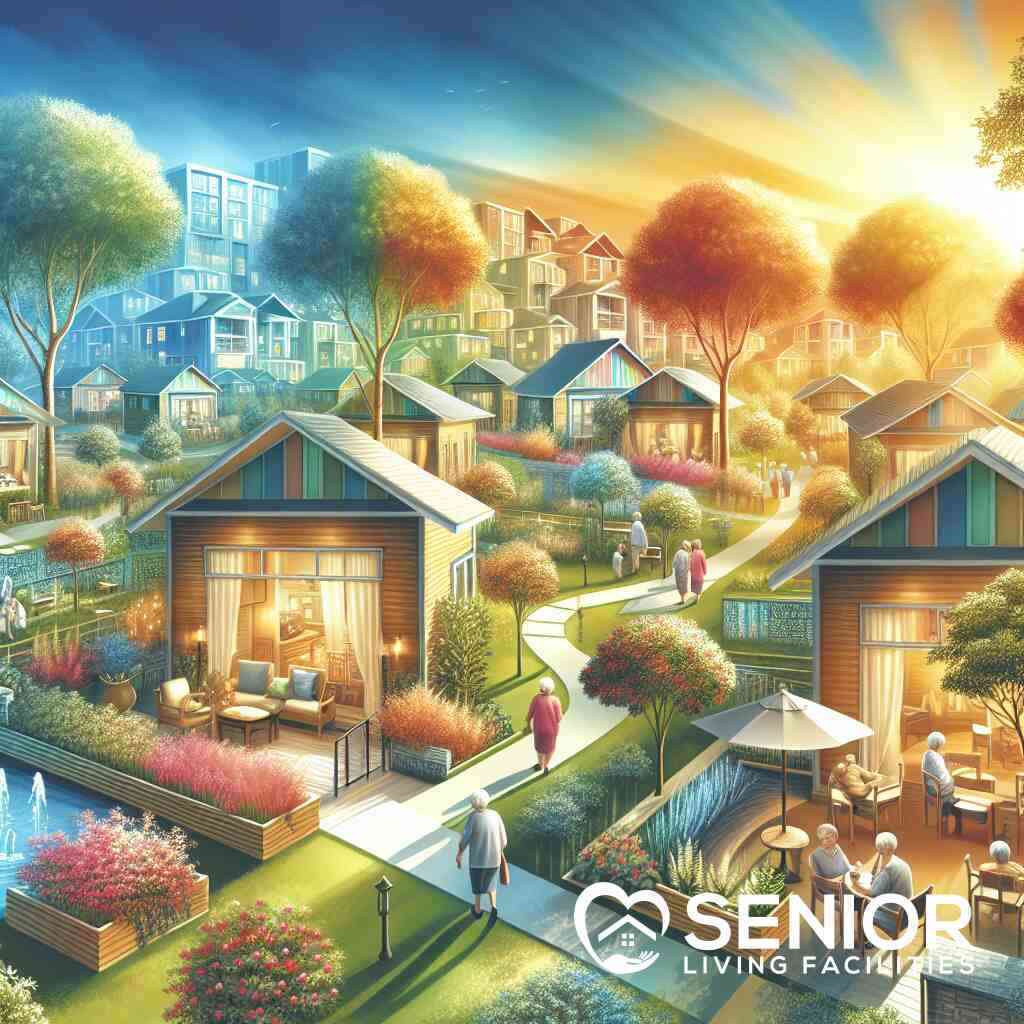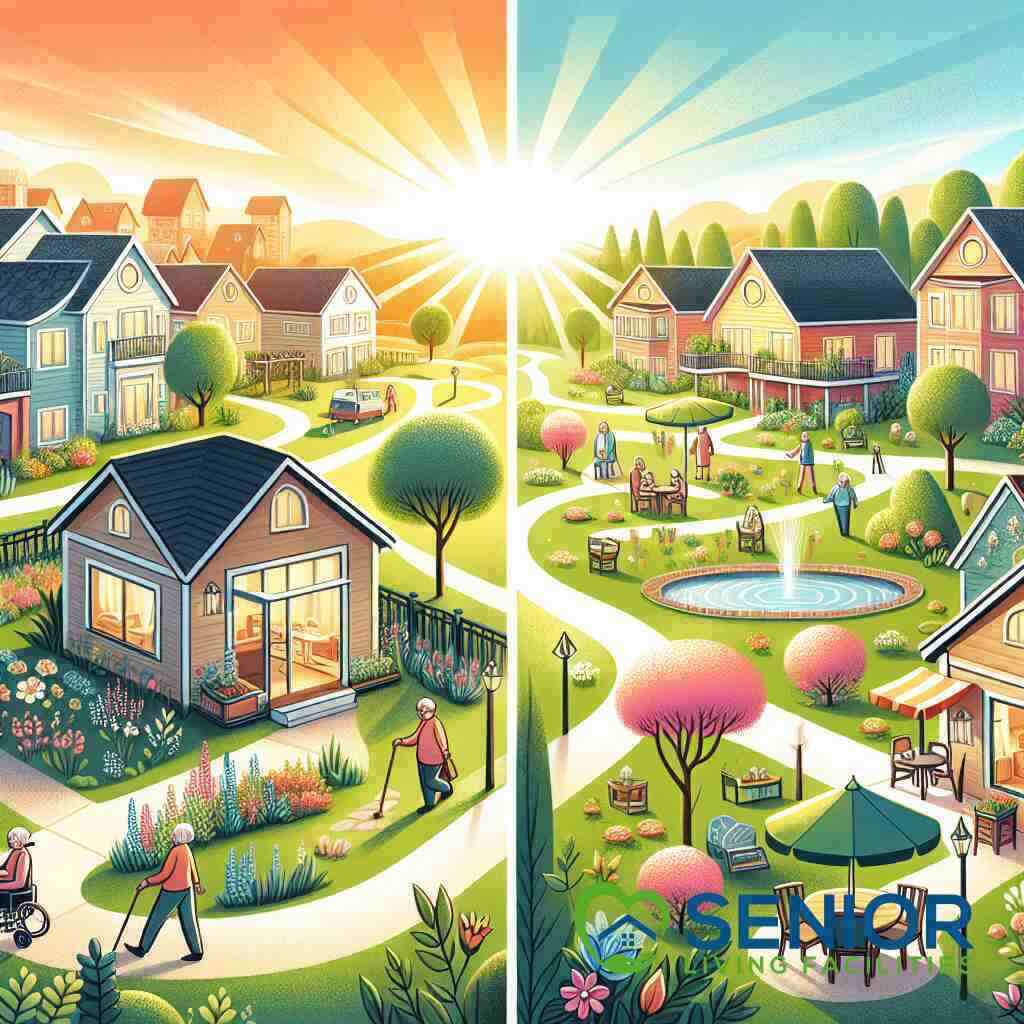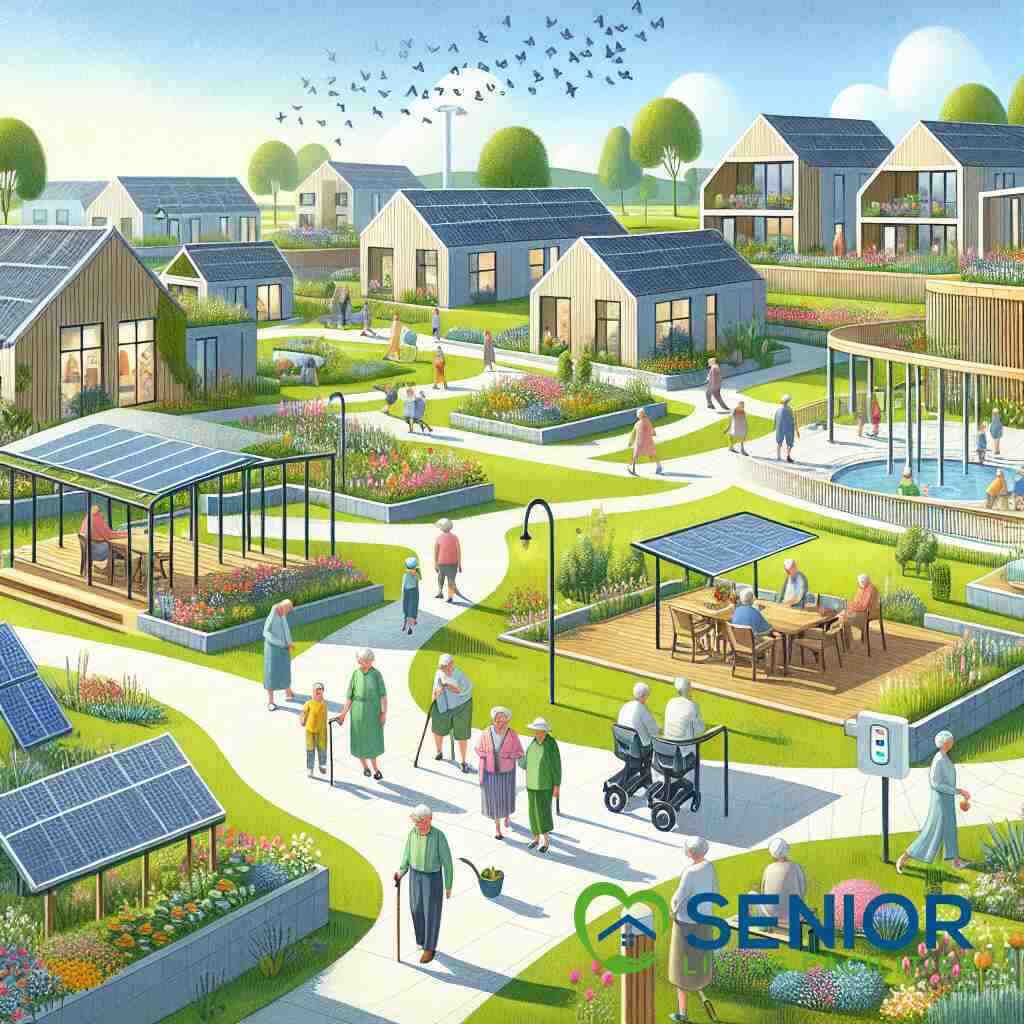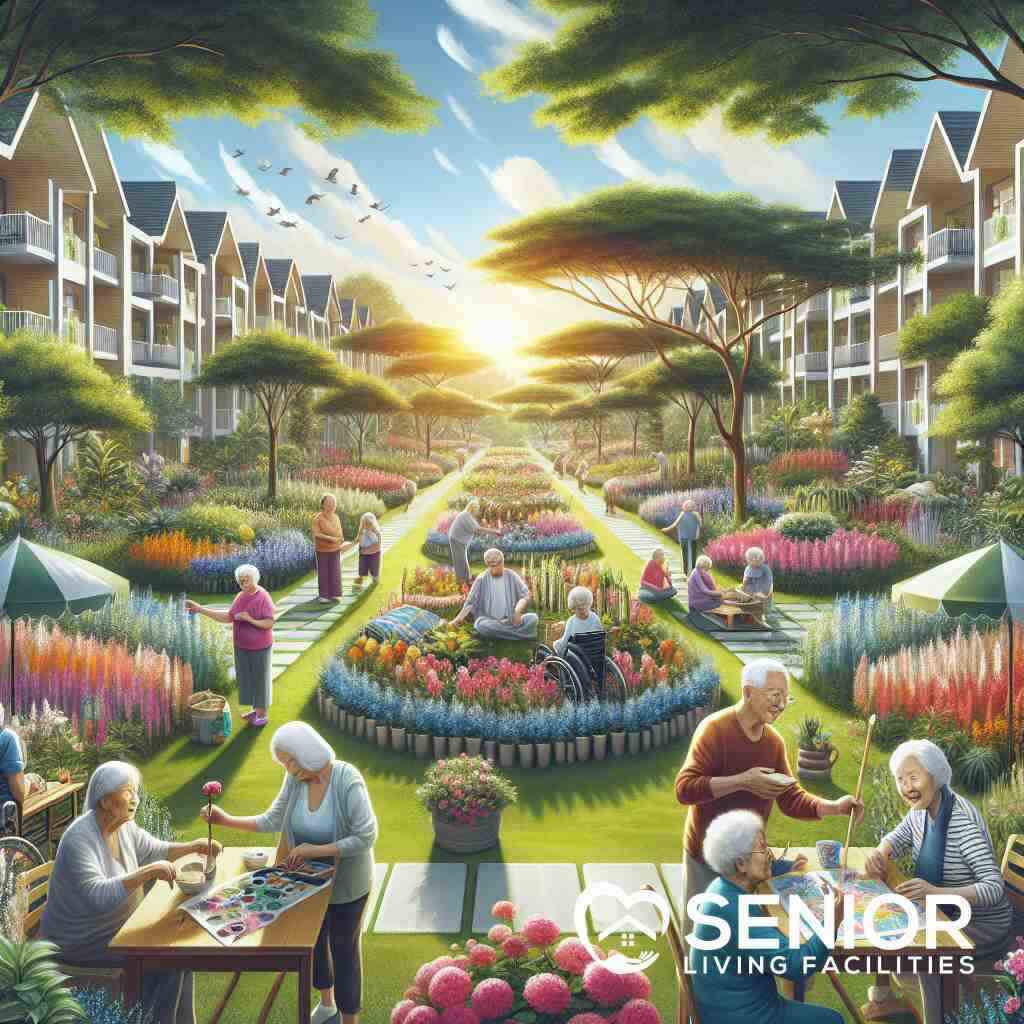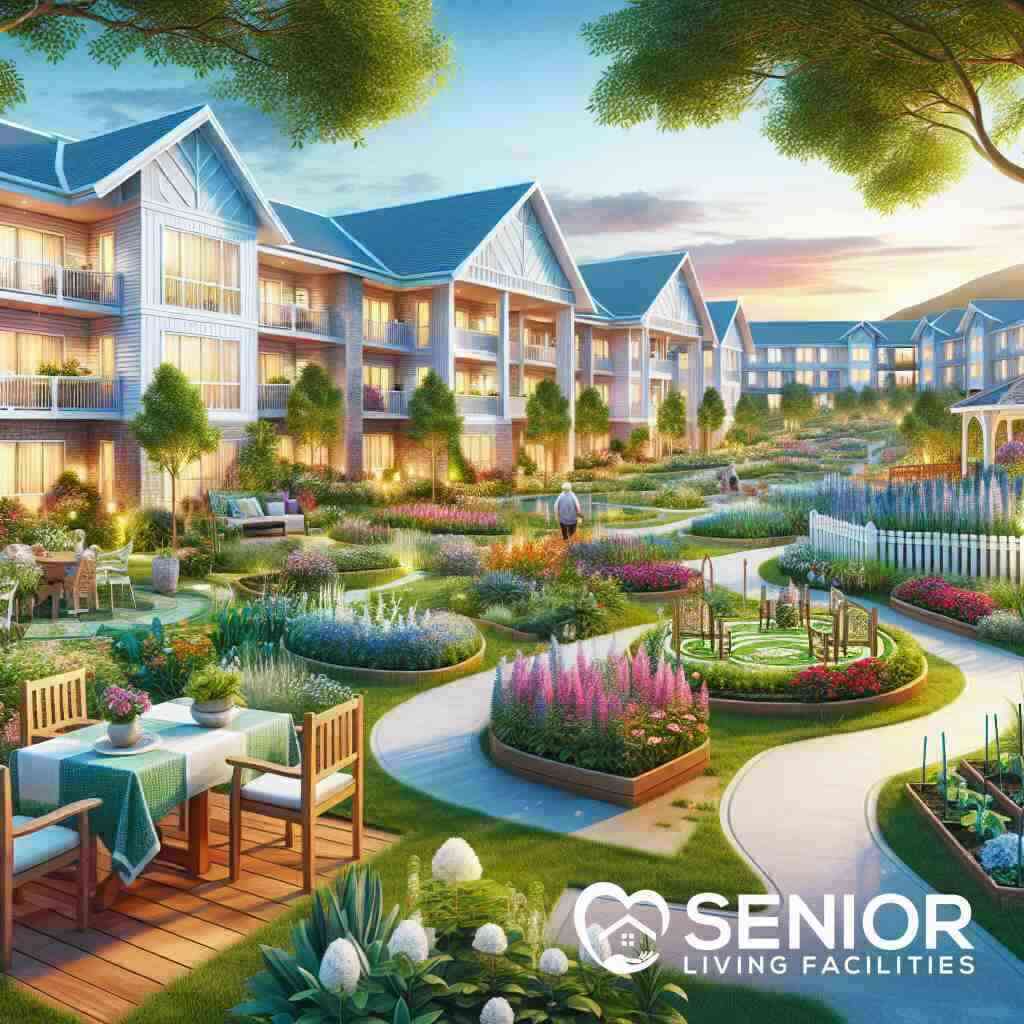
The Difference Between Aging in Place and Senior Housing
October 28, 2024
Unveiling the Concepts: Aging in Place vs. Senior Housing
Defining Aging in Place: A Closer Look at Independent Living
Aging in place represents the aspiration of many seniors who wish to remain in their home environment as they age. It’s about maintaining independence and taking control of daily life within familiar surroundings. This concept requires tailored home adjustments to meet changing mobility and health needs. Neither confined by rigid schedules nor external influences, aging in place allows for an individualized lifestyle. Yet, without proper planning, this independence can face hurdles related to maintaining safety and accessing essential healthcare services.
Efficient aging in place involves both physical and strategic adaptations to one’s home environment. Key modifications may include installing grab bars, upgrading lighting, and eliminating tripping hazards to foster a secure living space. These changes ensure that home remains a haven rather than a hazard as one grows older. In tandem with these adaptations, seniors and their families may consider integrating in-home support services. These services offer practical assistance with daily tasks while enabling older adults to sustain their independent living arrangements.
While the concept of independence is intrinsic to aging in place, it doesn’t isolate individuals from their community. Aging in place can be optimally enhanced through localized community engagement, which helps older adults feel connected and valued. Therefore, community programs designed to keep seniors socially active and mentally stimulated play a pivotal role. The success of aging in place ultimately pivots to finding the right balance between independence and adequate care support.
Understanding Senior Housing: Diverse Options and Structures
Senior housing encompasses various living arrangements tailored to different care needs and lifestyle preferences. These options range from independent living communities to specialized care facilities like nursing homes. Some seniors prefer environments specifically designed for aged adults, offering communal interactions, amenities, and assistance when needed. The variety within senior housing provides flexibility, ensuring individuals find a setting aligned with their unique preferences and requirements.
Independent living communities are perfect for seniors who want freedom from home maintenance and want more social engagement opportunities. Amenities such as fitness centers, dining services, and organized social activities enrich the lifestyle. Assisted living facilities offer a similar community structure but with added support for daily care needs. This includes help with activities of daily living like bathing, dressing, and medication management.
For those requiring consistent medical supervision, nursing homes or long-term care facilities may be the most suitable option. These facilities furnish intensive support, including round-the-clock medical care and rehabilitation services. Nursing homes and assisted living comparison analyses highlight the nuanced facets different care facilities offer. Understanding the distinctive attributes of these housing structures aids seniors and their families in making informed decisions that best cater to individual care requirements.
The Evolution of Senior Living Facilities: Trend Analysis
The landscape of senior living facilities has evolved dramatically, reflecting broader societal changes and emerging technological advancements. In recent years, there’s been an increased emphasis on personalized care and the incorporation of smart home technologies to enhance safety and convenience in these living spaces. This evolution mirrors the growing demands of an aging population seeking both independence and security.
One noticeable trend is the rising popularity of hybrid living arrangements. These facilities combine housing options like independent living with access to diverse healthcare services on-site. Such integrative approaches offer residents a continuum of care, ensuring seamless transitions as their needs evolve. This also underscores an increased focus on adaptability within senior housing solutions.
Moreover, community-centric models increasingly capitalize on social inclusivity and emotional support, enhancing the overall quality of life for residents. Emphasizing emotional well-being in senior housing encourages more sophisticated community designs that incorporate recreational activities, educational initiatives, and cultural experiences available in California. Understanding these trends can inform better choices for those contemplating senior housing and contribute to shaping a future where senior living is more harmonious and fulfilling.
The Dynamics of Independence: Aging in Place Essentials
Key Benefits of Aging in Place: The Appeal of Familiarity
Aging in place isn’t just about staying in a particular location; it’s about enjoying the profound sense of familiarity and comfort that home provides. For many seniors, the appeal lies in preserving daily routines and cherished memories within their own space. Familiar environments assist in maintaining emotional stability and mental health. Moreover, this lifestyle nurtures autonomy, allowing seniors to make personalized choices about their living conditions and routines. Embracing the benefits of aging in place, individuals can prolong their independence, promoting a steadfast connection to community networks and social engagement.
Challenges and Solutions: Adapting Homes for Senior Safety
While aging in place offers many advantages, it presents particular challenges, especially in terms of home safety and accessibility. The key is implementing practical modifications for safe senior living. These might include widening doorways for wheelchair access, adding ramps, or modifying bathrooms with walk-in tubs and shower benches. Proper lighting and the removal of tripping hazards like loose rugs can prevent falls. Technology also plays an essential role; advanced systems such as home monitoring devices and fall detectors can provide peace of mind. Planning proactively for these adjustments ensures that seniors can enjoy a safe, worry-free living environment.
In-Home Senior Care: Balancing Needs with Independence
In-home senior care strikes a balance by offering necessary assistance while allowing older adults to retain independence. This service can range from medical support to help with activities of daily living for seniors and and tailoring care plans to meet specific requirements. It caters to varying levels of dependency, providing flexible solutions as needs evolve. An integrated approach combining personalized physical care with emotional support enhances quality of life and independence. As seniors consider their future, these adaptable solutions become crucial in crafting a lifestyle that aligns with their desires while accommodating changing health needs.
Exploring Senior Housing Options: Communities Crafted for Seniors
Communities for Seniors 55+: Creating Social Bonds
For individuals aged 55 and over, communities crafted with their unique needs in mind foster deeper connections and social engagement. These communities often emphasize building a robust social network, which is a crucial component of emotional and mental well-being. Designed to support active aging, they offer vibrant lifestyles filled with enjoyable activities that cater to diverse interests. Programs in these communities may include recreational classes, group outings, and social gatherings, all aimed at nurturing relationships and creating a sense of belonging. Additionally, living in an environment with peers of similar ages can lead to shared experiences and collaborative support, enriching the communal living experience.
Whatever one’s interests or social preferences, retirement community living for seniors provides abundant opportunities to engage with others in meaningful ways. By designing spaces and activities that cater to the lifestyle aspirations of older adults, these communities help seniors maintain their sense of purpose and joy in daily life. Importantly, they also ensure safety and accessibility with features such as secure entry points and emergency response systems. By facilitating this combination of social engagement and security, communities for seniors 55+ become ideal environments for active and fulfilling retirements.
The Spectrum of Care: From Independent Living to Assisted Options
Senior housing options present a broad spectrum of care, accommodating various levels of independence and assistance. At one end, independent living communities appeal to those who cherish autonomy but wish to avoid the burdens of home maintenance. These environments enable older adults to live independently while still enjoying community resources and amenities. On the other hand, assisted living provides more comprehensive support, benefiting those who need help with daily activities such as bathing, dressing, or managing medications. This care is delivered within a supportive community that values independence, offering a balance many seniors find appealing.
Each type of senior housing is designed to fit the dynamic needs of aging individuals, allowing them to transition smoothly between different levels of care as they age. Whether one is drawn to an independent lifestyle with added benefits or requires more extensive assistance, options like these ensure that every need is met with appropriate care, offering choices such as those found in our ultimate guide to in-depth senior living choices. Decision-making around these choices can be simplified by using resources like the assisted living benefits comparison to evaluate the support available. This ensures a tailored approach that aligns with individual health needs and lifestyle preferences.
Senior Living Amenities: Ensuring Quality of Life and Well-being
The quality of life in senior living communities is greatly influenced by the breadth and depth of amenities offered. Modern facilities often include state-of-the-art fitness centers, wellness programs, and dining options that prioritize nutrition and variety. Engaging activities and classes, educational seminars to art and hobby workshops keep residents mentally stimulated and socially active. These amenities not only enhance daily life by offering convenience and choice but also ensure well-being by promoting a healthy and balanced lifestyle.
Beyond physical amenities, senior living communities must provide emotional support systems through services like counseling and peer support groups. Such diverse offerings highlight the flexibility in senior living environments, catering to the multifaceted needs of their residents. By prioritizing both physical health and mental well-being, these communities create nurturing environments where seniors can thrive. Senior living amenities are, therefore, at the heart of a fulfilling lifestyle, enabling residents to enjoy their golden years with vitality and companionship.
Comparative Insights: Where Should You Call Home?
Independent Living vs. Aging in Place: Tailoring Senior Lifestyle Choices
When deciding between independent living and aging in place, it’s essential to consider the distinct lifestyle preferences and care needs of seniors. Independent living offers a hassle-free environment with maintenance handled by the community, creating more time for leisure and relaxation. It also fosters social engagement through organized activities, enhancing the overall quality of life. On the other hand, aging in place allows individuals to remain in familiar surroundings, surrounded by cherished possessions and memories. To tailor choices effectively, one can refer to an independent living vs aging in place guide, which provides a comprehensive comparison and allows seniors to align their lifestyle with their goals and comfort levels.
Personal autonomy plays a significant role in deciding between these two options, as both aim to support independence in different forms. Community living offers the benefit of easily accessible services and social opportunities, which might appeal to those seeking energetic engagement and shared experiences. Conversely, aging in place offers personalized control over one’s daily life, with the ability to blend routine with community involvement at one’s own pace. Every individual’s priorities are different, so comparing the flexibility offered by each option helps in creating a senior lifestyle that best suits personal preferences.
Financial considerations also differentiate these living choices. Independent living communities often operate on a rental basis, including amenities in the package, while aging in place may require home modifications or in-home care services that could add financial responsibilities. Navigating these financial implications requires strategic planning. Moreover, seniors might want to explore solutions that satisfy both emotional and financial aspirations as they contemplate where to call home during their retirement years.
Long-term Care Facility vs. At-home Care: Analyzing Costs and Benefits
The decision between a long-term care facility and at-home care involves evaluating costs and analyzing benefit structures. Long-term care facilities, such as nursing homes, provide comprehensive services, ensuring continuous medical supervision and assistance with daily activities. This choice suits those with extensive health care needs, providing a secure and regulated environment. On the other hand, at-home care allows seniors to remain in their residences, receiving personalized care and maintaining routine familiarity. When weighing these options, understanding the full financial picture requires assessing factors such as service fees and insurance coverage intricacies.
Careful financial planning enables one to balance costs while aligning services with personal care requirements. Financial planning for senior care resources provides detailed insights into managing care expenses, whether embarking on home care solutions or transitioning to a facility. The benefits of each option are nuanced; while long-term facilities offer structured care environments and social interaction, at-home care allows flexibility and a personalized approach, potentially minimizing transition stress. Seniors and families should evaluate both immediate and long-term requirements to make an informed choice.
Emotional considerations also come into play with these competing options. A long-term care facility might offer ample social activities and companionship, promoting emotional well-being. Alternatively, remaining at home can offer comfort and a deep-rooted sense of belonging. Social interaction frequency and personal needs should guide decisions, ensuring the chosen care method contributes positively to the senior’s emotional health throughout their aging journey.
Emotional Well-being and Social Engagement: Community Life Considerations
Emotional well-being and social engagement form the cornerstone of a fulfilling senior lifestyle, whether one chooses senior housing or aging in place. Community life offers abundant opportunities for building social bonds and nurturing a sense of belonging through activities and support groups. Within these environments, seniors can engage with peers and participate in dynamic activities that foster emotional health and enjoyment of daily life. Communities that emphasize emotional support and inclusivity help alleviate feelings of isolation, enhancing overall well-being.
For those aging in place, maintaining social engagement demands proactive efforts to stay connected with community resources and social networks. Local senior centers, volunteer opportunities, and technological solutions can bridge this gap, ensuring ongoing interaction and mental stimulation. The key lies in striking a balance between independence and participation in social activities, creating a supportive network that contributes significantly to emotional well-being.
Choosing a setting that prioritizes emotional fulfillment requires exploring amenities and resources available within communities, as well as considering personal happiness and connection when aging in place. Emotional and social needs should hold equal value to physical care necessities when crafting a personalized senior lifestyle plan. This consciousness ensures that seniors retain vitality and satisfaction throughout their golden years, promoting positive mental health outcomes through diverse social experiences.
Financial Strategies and Planning for Senior Years
Understanding the Cost of Senior Living: A Comprehensive Guide
Understanding the cost of senior living can be daunting, as it encompasses various factors. Whether considering independent living, assisted living, or nursing homes, expenses vary significantly with the level of care required. Senior living facilities offer packages that include rent, amenities, and some services, but additional costs may arise with tailored medical care or enhanced community activities. Areas like popular states, including senior living facilities in California, may have varying price ranges influenced by location competition and amenities offered. This highlights the necessity to evaluate all aspects, from initial cost projections to potential out-of-pocket expenses, to ensure financial readiness for transitioning into senior housing.
Various payment options and financial assistance may ease the burden of senior living costs. Exploring long-term care insurance, veterans’ benefits, or even reverse mortgages can provide financial support. Additionally, government aid programs such as Medicaid might be available for eligible seniors, defraying some healthcare-associated costs. Understanding each payment avenue’s nuances is vital to minimizing costs while maximizing benefits. Financial advisors can offer tailored insights, ensuring that each choice aligns with the individual’s financial ecosystem and senior care requirements. Creating a detailed financial plan that accounts for both immediate and future expenses can help seniors make informed, sustainable living decisions.
Financial Planning for Aging in Place and Senior Housing: What to Consider
Financial planning for aging in place and senior housing involves evaluating distinct cost structures. Aging in place might require home modifications, in-home care services, and technological aids, contributing to variable costs. On the other hand, senior housing options often include bundled living expenses for a monthly fee. To make cost-effective decisions, you should conduct a comprehensive cost comparison of these living arrangements, factoring in ongoing monthly expenses and potential future needs. Resources like guides for aging-in-place tips and challenges can provide crucial insights into evolving needs and costs. Planning requires evaluating personal financial health and anticipating changes in income or expenditure over time.
Another aspect to consider is resale value and potential implications for estates or heirs in tangible property. For those modifying homes for aging in place, retentive property feature enhancements may add substantial long-term value. Conversely, transitioning to a senior living facility can impact asset liquidity and necessitate early financial adjustments. Balancing these factors, along with personal lifestyle preferences and familial commitments, forms the foundation of personalized financial strategies. Prioritizing a comprehensive plan enables seniors to handle financial obligations while prioritizing their living preferences and healthcare needs.
Access to Medical Services and Healthcare in Senior Communities
Access to healthcare plays a pivotal role when considering senior living options. Most senior housing facilities include fundamental medical services within their packaged plans for a secure, supportive environment. Whether community nurses, routine health check-ups, or emergency response systems, these services provide a safety net integral to senior well-being. Each facility will differ in healthcare services offered, emphasizing the need for informed choices based on personal medical needs. Understanding the level of integrated medical care is crucial, especially for seniors requiring chronic disease management or complex healthcare assistance.
For those aging in place, coordinating healthcare poses unique challenges. Access to healthcare services and providers like primary care, specialists, or even home health aides becomes crucial. Establishing a strong network of local healthcare providers ensures routine care is maintained and emergencies are swiftly managed. Readers interested in broader information on access to healthcare for seniors will find detailed insights addressing common hurdles and opportunities. Moreover, telehealth services have emerged as valuable tools, particularly for remote areas, to obtain medical guidance without geographic restrictions. Effective healthcare access, be it in senior housing or at home, underscores an enriched quality of life and ongoing senior wellness amidst aging challenges.
Drawing the Roadmap: Decision-Making in Senior Living
Choosing Senior Living: Aligning Needs with Facilities
Every senior’s journey toward choosing a living arrangement is unique, requiring a focus on needs and lifestyle preferences. It’s crucial to align the choice with available facilities, ensuring that they cater to individual requirements. Understanding the breadth of options can assist in making informed decisions-whether it’s an assisted living facility or an independent living community. These choices often depend on factors like available amenities, healthcare services, and community activities. The decision-making process should incorporate personal aspirations for engagement and health while assessing practical considerations like accessibility and cost. Guidance on how to select ideal senior living can provide structured insights, ensuring alignment between personal needs and facility offerings.
The key is to visualize potential daily experiences within these environments, social dynamics, care accessibility, and lifestyle adjustments. Families and individuals should evaluate facilities for personalized care levels and community involvement opportunities. Identifying gaps between current needs and plans remains fundamental in choosing the most suitable home. Seeking advice from senior living consultants offers an added layer of support, facilitating clarity in decision-making. Robust comparisons and strategic choices set the foundation for an optimized senior living experience reflecting individual desires and promoting quality of life.
Adaptability and Flexibility: Ensuring a Future-proof Senior Lifestyle
In the evolving landscape of senior living, adaptability and flexibility are paramount. Future-proofing senior lifestyles demands environments that can accommodate shifting needs, from increasing care requirements to enhanced lifestyle aspirations. Senior housing models now often integrate adaptable features, such as flexible care plans and modifiable living spaces, that cater to the progression of individual health and lifestyle changes. By anticipating potential needs and embracing flexibility in housing arrangements, seniors can achieve sustained independence and a vibrant social life.
Smart technology integrations and modular design elements are becoming standard in modern senior communities, fostering environments that adapt to changing circumstances. Emphasizing spaces that can evolve with technological advancements and medical innovations positions seniors at the forefront of care excellence. The focus on adaptability gives rise to environments where seniors can feel secure and supported without stagnation. This approach allows for a blend of personal comfort and future-readiness, essential for a lifestyle resilient to precarity and change.
Senior Living Facilities in Every State: Harnessing Local Opportunities
Exploring senior living facilities across states,, like senior living facilities in California,, highlights the diversity in community offerings tailored to regional practices and preferences. Each state features opportunities catering to distinct needs, spanning cultural engagements, climate virtues, and lifestyle patterns. For instance, states with temperate climates may prioritize outdoor amenities, while others may emphasize robust healthcare infrastructures. Understanding these local variations provides seniors with choices that align best with their preferred living environments.
Comprehensive statewide senior housing options present a roadmap to finding a senior community that integrates unique state-driven advantages. This guide includes evaluating localized financial incentives, community designs, and support services crafted for regional lifestyles. Seniors and families can utilize online resources and community reviews to gather insights about these statewide facilities, creating a well-rounded perspective on which to base decisions. Accessing a vast network of informed choices empowers seniors to find communities that resonate, establishing a wholesome environment conducive to thriving in their golden years.
Conclusion: Crafting a Path that Resonates with Your Core Values
Reflecting on Future Possibilities: Where the Heart Feels at Home
Reflecting on the choices between aging in place and senior housing, it’s crucial to align decisions with personal core values. The journey of selecting a suitable living arrangement involves considering emotional attachment to one’s home, the need for community engagement, and the pursuit of independence. Senior living facilities, amidst their diversity across states, present unique opportunities for those seeking communal bonds and extensive amenities. It is essential to weigh how each option aligns with long-term aspirations, whether it involves embracing a familiar environment through home modifications or engaging with vibrant community life. Senior Living Facilities’ vast network enables individuals to explore finding senior housing in Florida that aligns with both practical needs and personal desires.
Understanding future possibilities involves asking profound questions about what truly matters in the golden years, which can be informed by exploring the ultimate review: senior living facilities across America. Identifying where the heart feels most at home yields a fulfilling, satisfying living environment. Balancing the elements of emotional well-being, financial planning, and community involvement is paramount for a holistic picture. By considering these dimensions, seniors can forge a path that reflects their values and visions, leading to a harmonious and joyful retirement.
The Final Choice: Make It Informed, Make It Yours
Ultimately, the final choice between aging in place and senior housing should be informed and bespoke to individual needs and desires. Researching various senior housing options aids in understanding the spectrum of services, costs, and community offerings. Senior Living Facilities provide valuable resources to help prospective residents evaluate living communities for active adults. Through detailed comparisons, seniors and families can find a community that resonates with their lifestyle, ensuring the transition is both smooth and empowering.
Embracing knowledge-driven decisions allows one to craft a senior living narrative that is not only practical but personally enriching. Tailoring choices based on comprehensive assessments of personal needs, preferences, and financial considerations ensures alignment with long-term aspirations. Whether choosing the comfort of aging in place or the vibrancy of an active senior community, the decision rests with the individual, marking the beginning of a fulfilling new chapter in life. Engage deeply with available resources, and make the final step one that reflects your own story of independence and wellness.
Frequently Asked Questions
Question: What are the key benefits of choosing senior housing options over aging in place?
Answer: Senior housing options offer a variety of benefits tailored to different care needs and lifestyle preferences. These include access to community amenities, a structured environment that promotes safety and social engagement, and comprehensive healthcare services. Choosing senior living facilities means embracing a community that fosters social connections, offers diverse activities, and ensures healthcare accessibility. What Defines Quality in Senior Living Facilities? Additionally, amenities such as fitness centers and dining services are designed to enhance the quality of life, offering a balanced and fulfilling daily routine.
Question: How does the concept of aging in place differ from what senior living facilities provide?
Answer: Aging in place refers to seniors continuing to live in their existing homes while making necessary modifications to meet their evolving needs. This concept emphasizes independence and personal comfort but often requires strategic planning and home modifications to ensure safety and accessibility. On the other hand, senior living facilities provide a supportive community environment where seniors can transition seamlessly as their needs change. Senior Living Facilities: What Defines Quality Communities? These facilities offer structured support through various housing options like independent living, assisted living, and nursing homes, ensuring holistic care and social opportunities. Exploring Memory Care Options in Senior Living Facilities
Question: How do senior living communities cater to the emotional well-being and social engagement of their residents?
Answer: Senior living communities prioritize emotional well-being and social engagement by providing a range of activities and programs designed to foster social interaction and mental stimulation. Whether it’s participating in art hobby workshops, community outings, or recreational classes, these platforms enable residents to build robust social networks and stay active. Top 5 Senior Living Communities in California This social vibrance not only improves mental health but also reduces feelings of isolation, contributing significantly to overall well-being. Communities for seniors 55+ are particularly crafted to encourage strong social bonds and create a sense of belonging.
Question: Can you help me understand the cost of senior living as compared to aging in place?
Answer: Understanding the cost of senior living versus aging in place involves considering a variety of factors. Senior housing options typically include monthly fees that cover amenities, activities, and sometimes healthcare services. The Best Fitness Programs in Senior Living Communities These costs can be compared to the potential expenses of aging in place, which might involve home modifications, in-home care, and technological aids. Senior Living Facilities offer resources to compare costs and understand potential financial commitments, ensuring seniors and their families can make informed financial decisions aligned with personal preferences and health needs.
Question: How does the Senior Living Facilities platform support families and individuals in navigating between aging in place and senior housing, as outlined in the blog ‘The Difference Between Aging in Place and Senior Housing’?
Answer: Senior Living Facilities serves as a comprehensive resource to assist families and individuals in understanding the distinctions between aging in place and senior housing. Our platform allows you to search and compare different senior living communities based on your location, care needs, and lifestyle preferences. We prioritize providing detailed information on the level of care, activities, and medical services available at various facilities, helping individuals make informed choices. How to Find the Best Assisted Living in Pennsylvania? Whether looking to enhance home independence or transition to a community environment, our services guide seniors in selecting safe, suitable, and comfortable living arrangements. Guide to Senior Apartments in New Jersey
